ON THE TOWN with Chip Deffaa, March 31st, 2015
First, I’ll be talking about the ambitious, audacious, and one-of-a-kind production of “The Hunchback of Notre Dame” that is currently running at the Paper Mill Playhouse in Millburn, New Jersey. If you are into musical theater at all, it’s strongly recommended. I hope this show transfers to Broadway.
Although I usually focus on performances in New York in this column, this week I’m leading with commentary on a couple of shows I’ve just caught “out of town”–because they’re as intriguing as anything I’ve seen in New York City in quite a while.
First, I’ll be talking about the ambitious, audacious, and one-of-a-kind production of “The Hunchback of Notre Dame” that is currently running at the Paper Mill Playhouse in Millburn, New Jersey. If you are into musical theater at all, it’s strongly recommended. I hope this show transfers to Broadway. Ideally, I’d like to see it tweaked a bit, because I think some relatively minor adjustments would benefit it greatly (and I’ll explain my feelings in greater detail in just a bit); I’m giving it a very favorable but mixed review. It sometimes feels ponderous. But even if it were to transfer to Broadway “as is,” with no tweaking at all, I’m sure it would find an audience for a good long run; it’s an impressive achievement, with a great deal to admire. And the best moments–which are highly effective—drew prolonged,. rapturous applause from the opening-night audience; I haven’t seen a new musical elicit that kind of response in a couple of years.
Second, I’d like to also recommend John Tartaglia, currently starring in Jonathan Tollins’ charming one-man play “Buyer and Cellar” (directed by David Saint) at the George Street Playhouse in New Brunswick, New Jersey; Tartaglia gives the most appealing solo performance I’ve seen anyone give, anywhere, in recent years; it’s inspired casting, and the direction is impeccable– as perfect a fit of performer, director, and material as you’ll find anywhere in the region right now; well worth a trip to New Brunswick.
I’ll have more to say about both of these productions–and will also touch briefly upon some other shows I’ve seen, in and out of New York–in this column. Let’s start with “The Hunchback….”
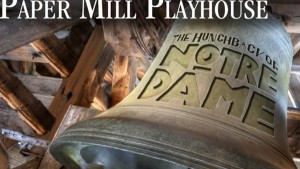 If you can get tickets, go see “The Hunchback of Notre Dame” at Paper Mill, where it is running through April 5th. If it transfers to Broadway–as I hope it will–you will pay much more to see it then. And there’s no guarantee that it will necessarily pack the punch of the current production (jointly produced by La Jolla Playhouse of La Jolla, California, and the Paper Mill Playhouse, by special arrangement with the Disney Theatrical Group).
If you can get tickets, go see “The Hunchback of Notre Dame” at Paper Mill, where it is running through April 5th. If it transfers to Broadway–as I hope it will–you will pay much more to see it then. And there’s no guarantee that it will necessarily pack the punch of the current production (jointly produced by La Jolla Playhouse of La Jolla, California, and the Paper Mill Playhouse, by special arrangement with the Disney Theatrical Group).
Based on the timeless novel by Victor Hugo, the show features a book by Peter Parnell, music by Alan Menken, and lyrics by Stephen Schwartz. (It is directed by Scott Schwartz, Stephen Schwartz’s son.) The score includes songs by Menken and Schwartz that many may recall from the Disney animated film version of “The Hunchback of Notre Dame” (as well as additional music)–but this is NOT the Disney film simply transferred to the stage. Sticking closely to the popular Disney film would have been the easiest course to take, but wisely the creators of this show have thought outside of the box. This is an original work, featuring many songs from the Disney film; but it is a darker, heavier work than the film was. It is aimed at adults, not children. And it has its own unique feel. The texture is denser than that of the film. The show, at times, has an almost operatic intensity. At other times, watching it, I felt as I did when I’ve watched performances of “The Passion Play”–it has a bit of a medieval “mystery-play” feel. I like that.
The set, by Alexander Dodge, is breathtaking. It is massive and heavy, and perfect in its way, evoking the Cathedral of Notre Dame. I gazed at the set–as impressive as any I’ve ever seen at Paper Mill–in fascination. You almost get your money’s worth just from the scenic design.
And there is a very strong cast. Patrick Page is magnificent as the show’s heavy–Archdeacon Frollo, who lusts after the gypsy Esmeralda (the vivacious Ciara Renee, giving another strong performance). Page’s deep, resonant voice is a joy to hear whether he is speaking or singing, and he creates a nicely nuanced characterization, as he tells her he loves her–threatening to kill her unless she yields to him sexually. Michael Arden is first-rate as Quasimodo, the hunchback–the “outsider,” hidden away from society in the bell tower of the Cathedral–who loves Esmeralda in an idealized way.
The basic story of “The Hunchback…” has time-tested appeal, and it is told quite well (for the most part) in this production. It is a morality tale, and I think anyone who enjoys, say, such musicals as “Les Miserables or “Man of La Mancha,” will enjoy this musical. (I preferred this new musical to both of those musicals, incidentally, and found the story to be told more clearly than in either of those musicals. That’s a matter of taste, of course. But that’s how I felt.) I like, too,. the classic, old-school theatricality of this production. The hunchback does not have any elaborate makeup; he does not wear a mask–just a few simple lines of greasepaint. The actor contorts his body. My personal favorite moment of the production–one I found both surprising and moving–came when the director had other actors apply greasepaint to their faces and contort their bodies; we saw a line of people on the stage, all similar in appearance to the hunchback–communicating without words that we are all, in essence, the same. It was pure theater, carried off with a few dabs of greasepaint and body language–and I liked it a lot.
At other times, simple, age-old theatrical devices are used to striking effect. When the hunchback pours molten lead, for example, the molten lead is represented by undulating silver-gray cloth; and it works terrifically.
This production’s unusually large cast features a big onstage choir (the local Continuo Arts Symphonic Chorus); and for me, this large choir really helps make the production work. I loved hearing all of those rich voices, helping to set moods, periodically repeating a key motif (just brilliant), and singing some ancient religious music that one might very well have heard at the Cathedral in 1482 (when the story takes place). I loved that choir.
But let’s ponder economics for a moment–the cost of producing shows on Broadway. If this show transfers to Broadway, will it have this same sort of huge ensemble cast (which currently helps give the show its impact), or will producers downsize the production to keep running-costs more manageable? Will they try to economize by replacing the current huge choir with just a few singers (which could never sound as good)? Generally speaking, shows can be produced at a much lower cost in New Jersey than in New York. Paper Mill Playhouse is not constrained by the same sort of Equity rules that hold sway on Broadway; in New Jersey, a large local choir can be hired at a very reasonable cost. If–in a hypothetical Broadway transfer of the current production– you had to pay every choir member the minimum salary set by Equity for ensemble performers in a Broadway musical, you’d wind up with a production whose running-costs might well be too high to make economic sense. A show with unusually high running costs (such as, say, the original production of “Ragtime” or “Spider-Man: Turn Off the Dark”) can draw big crowds for years without ever turning a profit.
If this huge production of “The Hunchback of Notre Dame” were to transfer to Broadway intact, the running costs would be far higher than the running costs of a show like, say, “Newsies” (which had a much smaller cast and was able to recoup fairly quickly). I’m hoping the producers may be able to negotiate with Equity, to get some concessions, if they transfer.
Go see this show at Paper Mill now. There’s no guarantee, if it transfers to Broadway, that the ensemble will be so large (and sound so satisfyingly rich and full) as the ensemble in the current production. The current cast (counting the choir) is very large by contemporary Broadway standards; the current production would be very costly to mount in New York. And unless Equity gives significant concessions, my hunch would be producers would try to downsize the production (which, from an artistic point of view, I’d hate to see happen).
I like this show. But the production is not perfect. I think there are some fix-able flaws that should be addressed before perhaps moving onto Broadway (or another regional production). I thought there should be more drama in the scene where the hunchback saves Esmeralda from being burned alive. In that scene, the show’s protagonist is doing the boldest, gutsiest, most noble thing he has ever done in his life;–but the scene, at present, is staged in a surprisingly low-key manner, almost thrown away. We see wisps of smoke coming up–I guess we are supposed to believe that at any moment Esmeralda will be burned alive; but to me the wisps of smoke did not appear to pose much danger–and then he simply showed up and took her away. I wanted something more to happen–we ought to feel greater tension for the rescue to pay off; the scene must be bigger in some way, whether in terms of music, lighting, and/or staging; the rescue should somehow seem more heroic to be fully satisfying. I just felt cheated a bit there.
I don’t think this production has quite the right balance of dark and light elements yet. There are stretches that are just perfect (and the audience’s applause is a reliable guide). This is a rather dark, heavy show; it does not have a happy ending. And I’m fine with that. But I sure welcomed the occasional greatly-needed moments of relief from the dark, heavy feel of so much of the show. I loved, for example, seeing the vital, life-filled, sensuous dancing of Esmeralda (choreographed with flair by Chase Brock). I would have welcomed more dancing, more lighter, brighter moments. I think the show could use a bit more of such relief from the darkness. Maybe another uptempo number? Or expanding some of the happier scenes? I think letting a bit more air and light in, at times, would improve the production. A show like “Cabaret” (which I love without reservations) tells a largely dark and unhappy, story, but with just the right mix of contrasting elements to hold our attention at all times. “The Hunchback of Notre Dame,” in its current form, has some sections that, for my own tastes, linger too long in the darkness. And proceed slowly. There are some very strong moments in this show. And this impressive show keeps replaying in my mind since I saw it the other night. It’s a production to contend with. But I think some tweaking could improve this production, and make a good show better.
Paper Mill has really been on a roll of late. Their production of Christopher Durang’s “Vanya and Sonia and Masha and Spike” (directed by Don Stephenson, with Carolyn McCormick giving a performance as splendid as any I’ve ever seen her give) was one of the funniest productions I’ve seen anywhere in the past year. (And they used the memorable the set David Korins created for the original Broadway production.) Durang’s always been one of our wittiest playwrights; but this play has more heart and insight than his early plays tended to have. And his portrait of aging siblings struggling with the challenges of growing older (to which I could certainly relate) touched me.
* * *
John Tartaglia–perhaps best known for starring on Broadway in “Avenue Q”–gives an unforgettable performance in “Buyer and Cellar, currently playing ” at the George Street Playhouse. He’s always been an exceptionally likeable, endearing performer, with an appealing mix of warmth and vulnerability. He’s very good company to keep for a 90-minute solo show. He’s also a master at doing other voices–a skill he’s honed in 15 years of working as a “Sesame Street” puppeteer–and he uses that to brilliant effect in this work, creating distinct characterizations. “Buyer and Cellar” is a fun show, and this is a terrific production. I can’t imagine anyone else putting “Buyer and Cellar” across more effectively. I’m not trying to take anything away from Michael Urie, who originated this role in New York, and has played it on tour, or from Barrett Foa, who succeeded Michael Urie. I just thought Tartaglia is an absolute perfect fit for this role, as written. (Incidentally, it’s not the first time Tartaglia and Foa have wound up playing the same part; I remember when Foa succeeded Tartaglia in “Avenue Q.”)
Tartaglia plays a struggling, down-on-his luck actor, “Alex More,” who gets what seems to be a dream job–manning the mall that Barbra Streisand has in the basement of her home. (The play is a work of fiction, but Streisand actually does have a mall in her basement.) He has to deal with the mall’s only customer–Streisand herself. Both are lonely. Both enter into a kind of friendship. How real is it? Should the character Tartaglia plays put Streisand ahead of his own boyfriend? Playwright Jonathan Tollins keeps us laughing, and caring, as he explores these issues and more in this sweet/sad solo show.
And Tartaglia makes all of the characters we encounter feel real. Even the late playwright/director Arthur Laurents comes into the mix–he’s referenced amusingly and knowingly in the script–and that feels especially fitting since Laurents loved the George Street Playhouse (which has since named its stage after him), and tried out plays of his there. (I enjoyed speaking to him when he opened a play there in 2007.) Tartaglia creates a character we can all empathize with; he is grateful that a celebrity of Streisand’s stature is now part of his life; while wondering what part of he life he might be. Tartaglia made me laugh–and I’m grateful for that–but I also found him poignant. And in the intimacy of the George Street Playhouse, you feel as if he’s speaking only to you. At least, I did. And I liked that.
I’ve appreciated Tartaglia’s work for many years now. I remember him, at a BMI Workshop, demonstrating songs that Bobby Lopez and Jeff Marx were writing for the musical they were working on, Avenue Q.” I thought then–and still think–that he and the songs were just great.
* * *
The Irish Repertory Theater–one of New York’s most respected Off-Broadway theater companies– is currently reviving Hugh Leonard’s play “Da,” directed by Charlotte Moore. I enjoyed this play tremendously during its original Broadway run in 1978. It won a Tony Award (as best play), and became the longest-running Broadway play, up until then, by any Irish playwright. I was thoroughly beguiled by Barnard Hughes’ performance in the title role (as the recently deceased Irish father); he possessed enormous charm and enormous presence on stage. (Hughes also starred in the subsequent 1988 film adaptation.) Hughes was so strong, the play struck me at the time as being all about him–a terrific showcase for a terrific actor; and the other actors sharing the stage with him seemed of much lesser importance.
Paul O’Brien, who plays “Da” in the current production, doesn’t have Hughes’ tremendous innate charm or larger-than-life presence on stage; he gives a much quieter, more understated, more naturalistic kind of performance. Ciaran O’Reilly (playing the son, “Charlie” grappling with the death of his father) gives at least as strong a performance. (Ebullient Adam :Petherbridge, playing “Young Charlie,” is also quite strong on stage.) Consequently, the character of the son, trying to sort out his feelings towards the irascible father who has just died, feels more important. In this production, the play feels more like the story of a son dealing with the loss of a parent. (In the original Broadway production, I felt more like I was being shown a lively, colorful portrait of the late father.) It’s a well-crafted play, capturing the ambivalent feelings of a son who’s still, in some sense, fighting with the parent who’s died. O’Reilly’s understated work is very effective; I’ve never seen him give a better performance on stage.
Watching this production while mourning the recent loss of a parent myself, the play now hit too close to home for me to enjoy it the way I originally did. I could still appreciate the subtleties of the writing, and how well the script is structured. (And the ending certainly pays off.) But my own wounds still feel too fresh for me to really enjoy watching a character on stage explore his feelings towards a parent who has just died. When writing a review, I don’t often discuss what’s happening in my own life; but in this case, it seems relevant; I know the fact that I saw this play–about a son who’s in mourning–while in mourning myself, colored the experience. I know I winced, this time around, at some lines and situations I would have simply found entertaining when I first saw the play.
* * *
All art involves an interaction between the work and the person viewing and responding to the work. That was brought home to me when I saw the Broadway production of Kenneth Lonergan’s play “This is Our Youth” (directed by Anna Shapiro) earlier this season. I enjoyed the play a lot–Lonergan is one of my favorite writers; he creates wonderfully vivid, true-to-life characters. And this production, co-starring Michael Cera and Kieran Culkin, is very well-cast. I hung on every word, and was really drawn into the action. I also loved this play when I first saw it Off-Broadway back in the 1990s. But I responded in very different ways to the two productions. This fine play had not changed; I had. When I saw the play the first time, I was much younger, and I identified more with the young characters on stage, eager for experience, trying to make sense of a world in which they had not yet found their places. This time, as I watched the wayward youths spend so much time hanging out in idle chatter–talking about getting high and looking forward to getting high, and getting high–I wanted to shake them and say, “You’re letting life slip by; time passes so quickly, you’re wasting your days,” or some such things. I liked the play as much as ever. But instead of seeing the young people onstage as being carefree and fun to be around, I found myself wondering, “What’s to become of them? Where are they headed.” That is me–less of a careless youth, more of an “old fogey”–worrying about the aimlessness of the kids on stage. And amazed at the passage of time. The current stars would have been just very young children when Lonergan tried out the very first version of this play (then a one-act play titled “Betrayal by Everyone”) at a theater festival in 1993.
* * *
“Camelot” is back at the Westchester Broadway dinner theater. The Lerner and Loewe score is glorious–a succession of superb songs: “What Do the Simple Folk Do?,” “Camelot,” “How to Handle a Woman,” and “If Ever I Would Leave You.” Incidentally, Jeremiah James, as “Lancelot,” sings “If Ever I Would Leave You” about as well as anyone could. He’s excellent in the role. Clark Carmichael is adequate as :King Arthur,” but ideally that role should be played with a greater sense of strength and authority. Jennifer Hope Wills brings freshness–and believability–to the role of “Guenevere,” who cheats on her husband with Lancelot, at great cost to King Arthur’s reign. Jordan Wolfe was enjoyable as “Mordred.” I was disappointed that the roles of “Merlin” and Pellinore” were played so blandly; there are character actors who could make those small roles count, and really stand out.
Director Richard Sabellico keeps the story moving. This production is being done with a much smaller cast than usual, and I do miss the lavishness I’ve seen in past productions of this show elsewhere. But the story and score remain appealing. The best songs really are irresistible.
* * * .
What a treat it was to check out some of the rising-generation of dancers in the Nutmeg Ballet Conservatory’s “Impact” show, up in Torrington, Connecticut. Oh, there were some “old favorites” on the program who never fail to impress: Sarah Jimenez imbues everything she does with such personality, it gives her dancing a bit something extra; and Thel Moore is as graceful and elegant as any dancer-to-watch I know.
In the first act (“Les Sylphides,” from 1909, with choreography by Michel Fokine, music by Chapin, and staging by Denise Warner Limoli), Moore and Jimenez, and Riley McGregor and Cassandra Punzo, all contributed deftly as soloists. But in “Les Sylphides,” it was often the whole ensemble, rather than an individual, that commanded notice; the “star,” if you will, was the entire Cops de Ballet. This is a challenging older piece, and members of the ensemble grouped and regrouped into striking visual images, their body language and solemn expressions transporting us, in this “romantic reverie,” to an earlier time and place.
The second act of the program contained a number of surprises. It was great to see them revive MOMIX’s playful, colorful “Solar Flares,” which I last saw at Nutmeg three or four years ago. (Nutmeg is the only place, outside of MOMIX, authorized to perform MOMIX pieces.) Kate St. Armand teamed with the dancers themselves to create “The Arrow of Time,” a new work set to music by Dustin O’Halloran. And I give St. Armand and her charges credit for creating something fresh that I wanted to last longer.
I don’t expect perfection from younger dancers, at the start of their careers; I like seeing them go for the big challenges. I was happy to see, for example, Nicholas Gray, briefly take on the challenge–for the first time on stage before an audience–of becoming the “Bluebird” (from “Sleeping Beauty”). I don’t judge the performance the way I would that of, say, a seasoned pro. Five or six years from now, he’ll bring to a role like that greater strength and flexibility, greater technical skills in general; the leaps will soar in a different way. But it’s a wonderful bit of dancing to even attempt, and watching him, I’m thinking of that desire we all hopefully have to become the best we can become; I’m seeing man’s aspirations symbolized by a dancer whose reach may, at present, exceed his grasp. But I like that he’s going for it. That takes guts. (Incidentally, at the annual Connecticut Classic Ballet Competition, this past weekend, Thel Moore won a silver medal; Riley McGregor and Nicholas Gray won the bronze medal. Moore and McGregor won scholarships to the Bolshoi Ballet summer intensive dance program; Gray won a scholarship to Koltun Ballet Academy.)
I was glad to see the program’s whole “Sleeping Beauty Suite.” Andris Kundzins and Mary Columbie found all of the wit and charm and flair to be found, portraying “Puss in Boots and the White Cat.” I was grinning ear-to-ear, watching that brief, familiar routine carried off so entertainingly. It was really done well.
I was happy to see Matanya Solomon back dancing again, after being sidelined last time due to an injury. (And Tim Dobbins, alas, was missing from the action this time, due to an injury. Injuries are just part of the territory for dancers, as any number of dancer friends have reminded me over the years.) I enjoyed seeing Alexandra Lopez interacting with Moore, Solomon, Taylor Gober, and Alexsander Keeperman on the classic “Rose Adagio.” And Grace Canfield and Keeperman created the most drama of the program with the stirring “Wedding Pas de Deux” from “Sleeping Beauty.”
Keeperman, I might add, has excellent potential. He has great presence on stage–which is something that is very important for a dancer (or an actor) to have. And it’s rare. His instincts are just terrific. He can do the simplest gesture–perhaps touch his palm to his chest, or hand off a rose–and it just feels totally right. I enjoy his dancing tremendously; it feels utterly natural, spontaneous, balanced, but with the right seriousness of purpose, gravitas, when needed. He’s one of those dancers of whom I anticipate saying someday, “I saw him at the very start of his career; and he had it even back then.” (Just as I’ll say of Chase Brock, the choreographer of “The Hunchback of Notre Dame,” who is now 30-ish, that he was a standout as a dancer–and I noted it in print at the time–back when he was still in his teens.) I like seeing up-and-coming artists working so hard to excel. And I have great confidence in him.
* * *
Sometimes you see talent in a young performer, and it’s just unmistakable. A few years ago, I singled out a teenager named Ansel Elgort, saying he was a standout with a bright future, when he was starring in his high school’s production of “Guys and Dolls.” Since then Elgort (who’s just turned 21) has made several films–“Carrie,” “Divergent,” “The Fault in Our Stars,” “Men, Women and Children”– and has been cast to star in the forthcoming film “Van Cliburn.” And he was a presenter at this year’s Academy Awards Ceremony!
I remember complimenting Algort (who was then just 17) on his performance in “Guys and Dolls,” out in the lobby at New York’s LaGuardia High School after the show; I asked him if–after graduating from high school–he intended to go to college or pursue a professional career. He said he was going to aim for a professional career; his father added that the family really didn’t have a choice; they couldn’t afford college. Shortly after that, Ansel Elgort was cast in his first Off-Broadway show, “Regrets,” and then Hollywood beckoned. But his potential was obvious, just starring in that high school production (as I noted at the time). He just had that star quality. (Incidentally, when he was younger, he briefly dabbled in dance, but he did not have the flair for dancing that he had for acting and singing; when he auditioned for the School of American Ballet, he recalled, Olga Kostritzky told him in her heavily Russian-accented voice: “You will not be ballet dancer; you will be Broadway star.”)
And every time I see Hannah DeFlumeri impress in a concert in New York these days, I remember that her potential was obvious when she was starring in her high school’s production of “Gypsy,” in Newtown, Connecticut (as I noted back then), about five years ago. Sometimes the potential of an actor or singer or dancer just jumps out at you.
The best young female singer/actress I’ve seen in a high-school production in recent years is a gal named Jennifer Spottz, whom I caught starring in a production of “Anything Goes” at an all-girls’ school, the Oak Knoll School of the Holy Child, in Summit, New Jersey. She headed a strong cast. (And oh! I was impressed, too, with her sparkling co-star Brian Vincent Grimaldi, borrowed for the play from the nearby Pingry School. I’d cast either of them in a show or on a recording project, if the right opportunity ever came up. And if I closed my eyes, I would have guessed they were both older, more seasoned performers.) If I could have bought a cast album of that production–or an album of Spottz alone–I’d be playing it now. (As it is, the songs from that show have been replaying in my head.) The strength of Spottz’s performance, the beauty of her sound, the confident attitude she projected–all of these qualities have stayed with me since I saw her work. And, best of all, tackling a role that has been done by such great musical-theater stars as Ethel Merman, Patti LuPone, Sutton Foster, she did not sound like anyone else I could name; she was not trying to sound like anyone else; she was just being herself. And that was neat I hope she’ll stick with performing. .
* * *
Of course, not everybody in the arts who has potential will stick with it. There’s a high rate of attrition in the arts. The stresses and strains of pursuing a career will be too much for many people. One must have not just talent, but energy and drive and determination, plus a certain stubborn kind of stick-to-it quality that is simply all-too-rare. And you also have to be a risk-taker, with an instinct for knowing when to move out of your comfort zone and take the chance on something that excites you, even it may appear risky.
Let me give you one example. Jon Peterson–whom I personally believe to be as talented a song-and-dance man as anyone working in the theater today–is currently in Florida, starring in my show “George M. Cohan Tonight!” at the Broward Stage Door Theater. He’s been playing this role for me, off-and-on, for more than a decade. (This is his third engagement at that theater alone.) Now, Jon starred in a number of musicals in London, where he grew up. Then he was brought over to America to star as the Emcee in the National Tour of “Cabaret.” He played that part for two solid years on the road, and then served as standby for the Broadway production. When I offered him a chance to play Cohan, he left that job on Broadway–which paid well–to take a chance with me (for no pay, initially) on a show I promised to write in three weeks while we rehearsed. It was a hunch, on his part; after playing the Emcee in “Cabaret” for a couple of years, he felt he was ready for the challenge of originating a role, in a new show that I would be writing for him, based on his brilliance in an audition for me. It would have been much easier, safer, more comfortable, for him to stick with :”Cabaret.” But he was curious to see how a show I would write and direct especially for him, tailored to his strengths, might turn out.
He took the risk–and not everybody would have; that’s for sure! He left “Cabaret,” cast his lot with me, and it’s worked out well. He’s gotten raves for his work in my Cohan show, for the past decade. (The latest review, by Bill Hirschman, in “On Stage,” states that Peterson “has every vocal flourish and hand gesture … polished to a high gloss, only outshone by his determined smile and an irresistible charisma….. He summons up more energy than an entire chorus line of ’42nd Street’ and sends it flowing across the invisible footlights like an electrical storm surge…. Pure showbiz pizzazz…..”) And whenever Jon feels the need to do other work, he does so, and that’s good, too. And then eventually he comes back to playing “Cohan” for me with renewed zest. He says he actually finds more fun doing the role now than he did a decade ago.
I’m glad he took that chance with me. And I always get a great kick, watching him do the show; he’s forever changing what he does, keeping it fresh. And surprising me. Plenty of other actors have played that show now; but there’s no one else I enjoy watching play it as much as I enjoy Jon Peterson. From time to time, I’ve also seen him go on–and be his usual charming self, dazzling the audience–while dealing with various health issues that would have sidelined most actors. And never letting the audience see him sweat. And never missing a performance. My kind of trouper.
* * *
Right now, I’m in the process of making the cast album for my show “The Irving Berlin Ragtime Revue.” We have one more recording session to go. (This will be the tenth album I’ve produced.) Then we ‘ll be finished, and I’ll move on to producing the next album. I love making cast albums. This is a big project because we have more than 40 songs in “The Irving Berlin Ragtime Revue,” and we’ve got some tap-dancing, too.
We have a nice mix of talent in this 13-person cast; our youngest performers are in their teens; our senior-most performers are in their 40s. About half have worked with me before. (Some I’ve known for more than a decade.) About half are people I found through auditions for the show. I start recording sessions by having Emily Bordonaro record a number (either by herself or with another reliable young performer I’ve long known, Michael Kasper). Emily is 18, she’s worked with me since she was 11; she’s not only tremendously talented, she’s fearless. Nerves of steel. Recording never makes her nervous. (And I’ve seen it give many older performers a case of the nerves. I’ve sometimes had to fire performers because they got too nervous recording to sound good.) So I start with Emily. She’s one of our youngest cast members; but I know she’ll work with confidence and ease, and nail her songs quickly. And thus set a good example for everyone else. Her confidence is contagious. (Some of the older cast members told me flatly that recording makes them nervous; letting them see Emily work so securely and well–whether by herself or with castmate Michael Kasper–helps put them at ease.) Jonah Barricklo, another of our young performers, is similarly fearless. These, once again, are my kind of actors.
* * *
I’m currently busy rehearsing my next show “Mad About the Boy,” which opens April 12th at the 13th Street Repertory Theater. In casting this show, as usual, I’ve mixed performers I’ve worked with before (whose talent and professionalism I know well), along with others found through auditions or the recommendations of industry pro’s.
I always like finding new faces via auditions; talent can be spotted quickly. What you can’t always see in auditions is whether the person will be reliable, will have a good work ethic. Carol Channing–one of the greatest of all musical-comedy stars and a valued longtime friend–has taught me well the importance of finding people with good work ethics. And they are rarer than you might think, too. I always cast more people for my projects than I expect I will ultimately need. (Again, that is something I’ve learned from Carol Channing.) Because a certain number of the actors will prove, during the rehearsal process, to be too unreliable to use–too often they will be late to rehearsal, or miss rehearsals (and give flimsy excuses or no excuses).
I love rehearsing. It is great fun–especially with good, enthusiastic players. .But I also know, when rehearsals start, that some very talented people, alas, will inevitably prove too undependable to work with. They won’t wind up being in the show when it actually opens. In many cases, they won’t wind up having careers in the theater–and they won’t understand why. Carol Channing, who has a work-ethic as strong as anyone I’ve ever met, has taught me well–and I watch the process repeat itself in every show I mount, as we see, during the rehearsal process, who is reliable and who is not. Year after year, there are a lot of flaky aspiring actors who audition. Maybe they have dreams of being famous, but don’t want to put in the hard work. You learn, over time, who wants to really work, and will come through in the end, rain or shine…. And who belongs in another profession.
* * *
As I finish writing this column, it’s two in the morning. I spent this evening in Trumbull, Connecticut, where I’ve watched the youths of Trumbull High School present “Hello, Dolly!” with great gusto. They did an amazing job. (When I got home, I first dashed off a note to Carol Channing–who starred in the original Broadway production of “Hello, Dolly!” and went on to play the role some 5000 times, counting revivals and tours–to tell her how great the night was; and now I’m sharing the details here.) This was the high school, you may recall, that was in the news a year or so ago, when the principal tried to cancel the show they’d chosen to do as their Spring musical–Jonathan Larson’s “Rent.” The principal feared “Rent” was too controversial. A wonderfully determined student, Larissa Mark, led a successful campaign (which attracted national news coverage) to let them present “Rent.” Last year at this time, I was sitting in the high school auditorium–along with Jonathan’s Larson’s family and friends–watching the students give their all on “Rent.” We were all proud of the good job they did. Last year, I saw some of these same kids portray New Yorkers of the 1990s. Now, I was watching them portray New Yorkers of the 1890s. (I’m glad that Jessica Spillane, who has been directing theater at Trumbull High School for many years, gives the kids exposure to all different types of shows.)
I had a hunch they’d do a good job, because they’d done “Rent” well. The kids take theater seriously at Trumbull High School, and this is the 17th musical Spillane has directed there. But still, I wasn’t prepared for the grandeur and showmanship of the production. They had some 60 kids up on that stage, and they carried off one number after another in the spirit and tradition of the late Gower Champion, that master director/choreographed who staged the original Broadway production of “Hello, Dolly!” (And all subsequent Broadway revivals and national tours of “Hello, Dolly!” and have been based on his work.)
The Trumbull production was choreographed by veteran Frank Root (and his daughter Abigail Root), who certainly has familiarity with Champion’s brand of showmanship–Frank Root was a dancer on Broadway in two of Champion’s own musicals, “42nd Street” and “Mack and Mabel.” (“Mack and Mabel” was created by the same team that created “Hello, Dolly!”–it was directed/choreographed by Champion, with a score by Jerry Herman, and a book by Michael Stewart.) And Frank Root also performed in the national touring companies of the musicals “George M!:” and “Show Boat.” He understands classic Broadway razzle-dazzle. And got the kids to execute with precision and elan huge production numbers like “Put On Your Sunday Clothes” (complete with the moving-train effect), “Before the Parade Passes By,” and of course, the show’s irresistible title number, “Hello, Dolly!” This was some of the best ensemble work I’ve ever seen in a high-school production. I only have space to name the principals in this big cast–Alex Luft, Zac Gottschall, Annie Stachura, Michael Lepore, Jack Leonard, Katherine Griffin, Lauren Chase, Matt Buckwald, Tina DeLucia; I wish I had room to name every member of that ensemble. The hard work they put into mastering one big production number after another sure paid off. I’m very proud of every one of them. And those chorus girls and boys contributed as much to the success of the show as the stars. The title number–one of the all-time great production numbers in Broadway history–owes it potency as much to the singing/dancing waiters (who carry so much of the number) as to the character “Dolly.” When the waiters sing to her the words “You still get glances from us handsome men,” we’re seeing not just “Dolly,” but the broadly smiling waiter next to her, happily making eye-contact with her (Colin McLevy). When Dolly turns to another waiter and inquires, “Did you lose a little weight, Stanley?,” both “Dolly” (Alex Luft) and “Stanley” (Nathan Clift) are making the moment shine.
The kids really made every scene count. The strutted through “Elegance” with flair. When Luft picked up her hat and cane to put across “So Long, Dearie,” I could have sworn she was modeling her performance on what she’d seen on Broadway–except for the fact that she wasn’t born when “Hello, Dolly!” was first presented on Broadway (or when it was last revived on Broadway, for that matter). I’ve seen productions of “Hello, Dolly!”–on Broadway, on tour, regionally, etc.–many times. It is one of the greatest musical comedies ever written. (The best “Dollies” I’ve ever seen were Carol Channing and Pearl Bailey–two of the best performers I’ve ever seen on Broadway; the worst “Dolly,” by far, was Phyllis Diller.) I’ve watched Channing play the role repeatedly–not just in New York, but in Washington DC and Austin, Texas. (I flew to Austin specifically to witness her very last performance as “Dolly”–the end of an era.)
What I remember most from the last production of “Dolly” by teenagerss that I saw (at a school in New Jersey) was the chorus kids chewing gum and talking to each other onstage when they should have been focusing on the star, and the way the chorus kids were moved on and off the stage in a clump, to stand like a choir and sing a song… and eventually leave in a clump. To do a real production number, and make it move from start to finish, and build throughout–as the kids at Trumbull did, is a great achievement. And the sets and costumes were a delight, too. Although I must confess, it felt a little odd to see “Dolly”—in the climactic Harmonia Gardens scene–in a dress that was not the bright, bold red always worn by “Dolly” in the Broadway productions and national tours. (It was a more muted brownish orange.) Lee Roy Reams, who directed the last national tour, has told me there are some things you must not change—and one is the color of the dress in the show’s most famous scene; that’s a theatrical tradition worth keeping And red just fits Dolly’s vivid personality.)
Both Carol Channing and composer Jerry Herman have told me, separately, that when “Hello, Dolly!” began its first out-of-town tryouts, it did not look like the show was going to be a hit. (One reviewer headlined his critique: “Goodbye, Dolly!”) The show, at first, felt uneven, and audience reactions were mixed. The audiences responded enthusiastically whenever “Dolly” was onstage, but seemed restless if she left the stage for too long, while other characters (like Vandergelder, or Barnaby or Cornelius) held the stage. And during out-of-town tryouts in Detroit, the show gradually came into focus. The writers and the director changed it, to reduce the amount of stage-time given to Vandergelder, Barnaby and Cornelius, and increase the stage-time given “Dolly.” When “Before the Parade Passes By” was finally added to the score–the last song to be added–everything fell into place. And they had a hit. The actor playing Vandergelder (David Burns) did not mind his part growing smaller; he understood it was for the good of the show. The actors playing Barnaby and Cornelius may not have been so understanding. Carol Channing told me, she had to say to one of them: “The name of the show is ‘Hello, Dolly!,’ not ‘Hello, Barnaby!’”
I’m glad the Trumbull kids pulled this wonderful show off so well. And it was great to see, once again, some of kids from last year’s production of “Rent.” (Larissa Mark, now a student at Columbia University, was there to cheer her former schoolmates.) Some of these kids will no doubt make their marks in the world of professional theater someday. (The fellow who’s co-choreographed my last four productions in New York City danced, as a teen, on that same Trumbull High School stage, not too many years back.)
I wrote Carol Channing, who’s devoted a great deal of time and money in recent years to campaigning for keeping the arts in public schools, that she would have loved this Trumbull High School production.
Last year, when Trumbull presented “Rent,” they created a great display in the lobby that was both educational and entertaining—teaching us about things related to the play. I’d never seen anything like that in connection with a school play. I was sorry they didn’t do that again this year. It was such a memorable presentation, I was hoping they might create a tradition of creating such elaborate lobby displays for all of their shows.
* * *
NBC-TV has picked “The Wiz” to be its next “live” Broadway musical to be telecast. They’ll present the show “live” on TV next December–and then present it (co-produced with Cirque du Soleil) on Broadway. (It’s been long overdue for a major revival.) Boy! I remember, like was yesterday, when “The Wiz” first arrived. It was conceived and written by my longtime friend, playwright/cartoonist Bill Brown, with songs by Charlie Small–and no one anticipated it would be the smash hit it turned out to be. I saw it when it opened, proud that my friend had written this show. And it became the surprise hit of that season. I’m happy for Bill Brown and all involved that it is coming back. Harvey Fierstein will contribute new material to the script, this time around. And the indefatigable Bill Brown, meanwhile, is working on a new twist on “Oliver Twist.” I wish him well with that, too.
— CHIP DEFFAA, March 31st, 2015

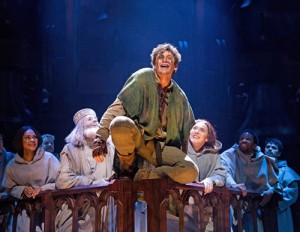

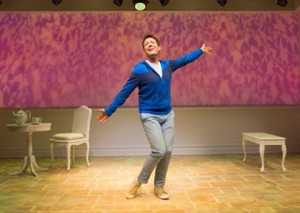
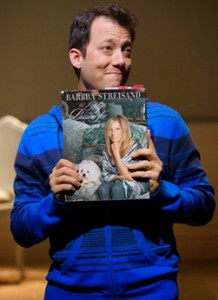
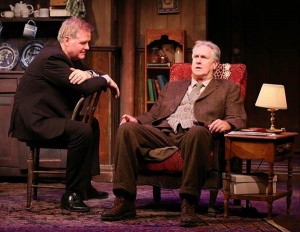

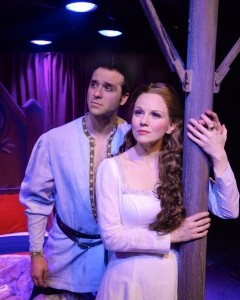
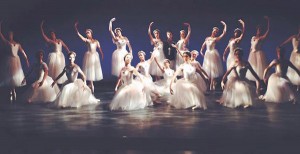
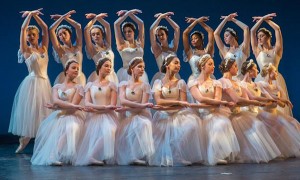

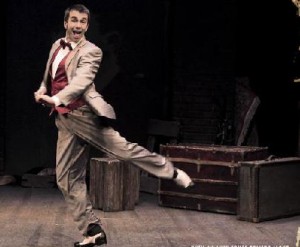








Leave a comment